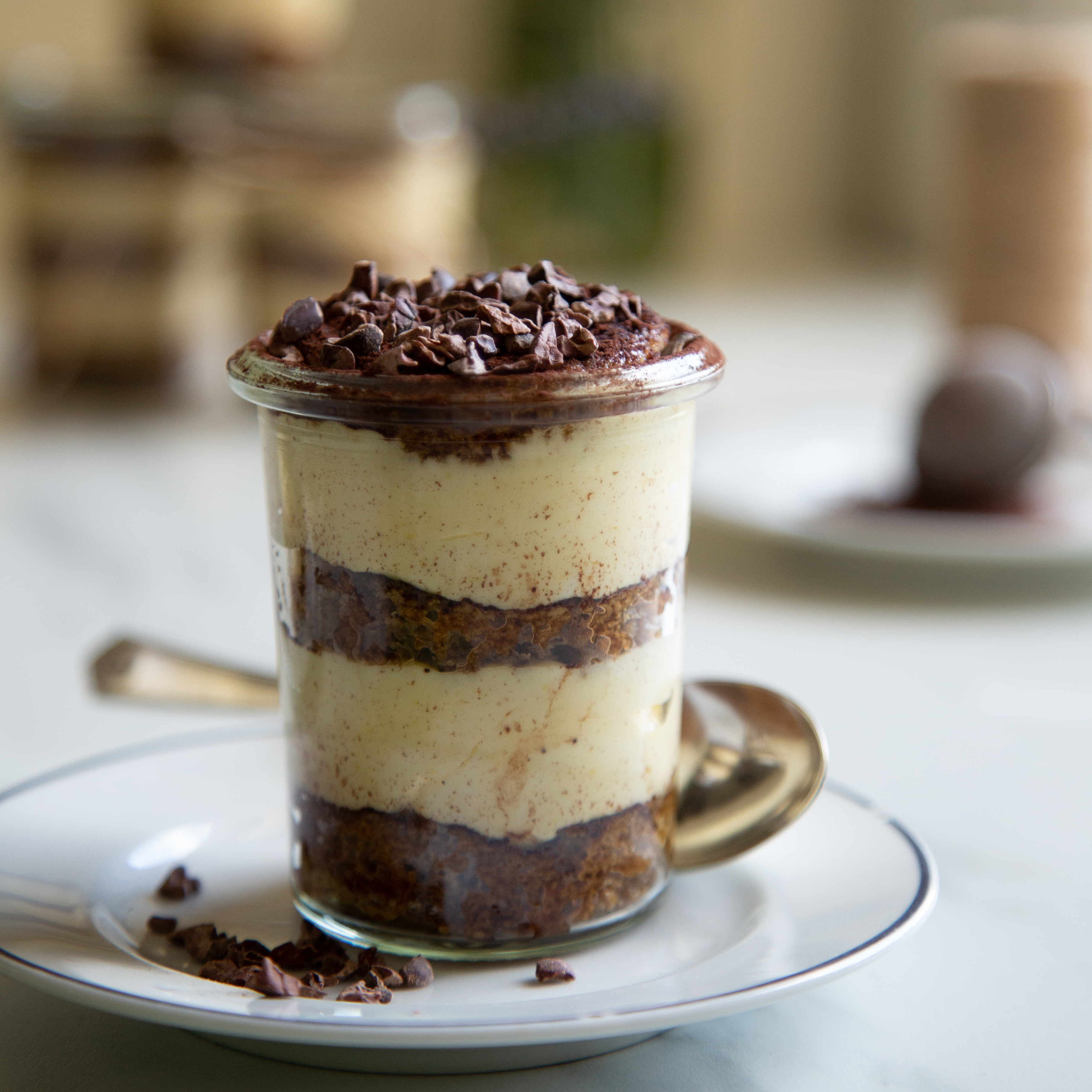New pieces with a handcrafted look + collected feel. Shop the summer collection.
Dive into our seasonal theme of boundless in Magnolia Journal. Get your copy.
Jo's new series, Mini Reni, is here! Shop the latest episode.

Tiramisu with Lavender in a Jar
Total 1 hour and 15 minutes
Active 55 mins
Makes 12 portions
I'm trying to eat healthier, but it can be hard because I'm constantly surrounded by such decadent (and often buttery) treats. So sometimes it’s all about portion control — by baking them in smaller portions I can keep desserts in my diet while setting myself up for success.
TIP: Once your espresso sponge cake has cooled, it can be wrapped in plastic and refrigerated for 24 hours before assembling the jars.
Special Equipment
twelve 5.4-ounce jars
Special Equipment
twelve 5.4-ounce jars
Ingredients
Espresso Sponge Cake
Mascarpone Filling
To Assemble
Lavender Simple Syrup
Directions
- Begin by making your espresso sponge cake: Preheat the oven to 350°F. Line a baking sheet with parchment and grease with butter.
- In a stand mixer fitted with the whisk attachment, whip the egg yolks on high speed. Once the eggs are well combined, turn the speed to medium-low and slowly sprinkle in half the sugar. Turn the speed to high, and slowly drizzle in the hot espresso. Let it whip for about 5 minutes until the egg mixture is light in color and very thick.
- In a clean mixer bowl with a clean whisk attachment, whip the egg whites on medium speed until they start to foam. Slowly sprinkle in the remaining sugar to create a French meringue, turn the speed to high and beat until stiff, glossy peaks form, about 1 to 2 minutes more.
- Mix about a third of the meringue into the yolks to lighten the yolk mixture. Gently fold the remaining meringue mixture into the yolks using a rubber spatula.
- Combine the flour and salt and sift one-third of the mixture over the egg foam and gently fold it in with a rubber spatula. Repeat with the next one-third flour and then the final one-third flour.
- Spread the cake batter over the prepared baking sheet and smooth the top with a small offset spatula.
- Bake for about 15 minutes, or until the cake springs back when gently pressed. Allow the cake to cool completely.
- Make the mascarpone filling: In a double boiler, whisk together the egg yolks, lavender syrup, and salt. Continue whisking until the mixture thickens. Place the bowl in an ice bath to cool the mixture quickly.
- In a stand mixer fitted with the whisk attachment, whisk the mascarpone and heavy cream together on medium speed until they hold stiff peaks.
- Gently fold the whipped mascarpone into the yolk mixture in thirds. Place the mascarpone mixture in a pastry bag fitted with a round tip and set aside.
- To assemble: Create the soaking liquid for the cake by combining the cooled espresso (or coffee) with the 2 tablespoons of lavender simple syrup and set aside. Have ready twelve 5.4-ounce jars.
- Dip a round cutter that matches the diameter of your jars into water (the cake is a little sticky, so this will help the cake release from the cutter), then cut out a circle of the cooled cake. Dip the cake circle into the espresso-lavender mixture and place the soaked cake circle on the bottom of a jar. Dust the top with cocoa powder. Pipe a thin layer of the mascarpone filling over the cake. Repeat with another layer of soaked cake, cocoa powder, and mascarpone filling. Finish with one more layer of soaked cake and cocoa. Repeat with the remaining jars. Cover each tiramisu with cacao nibs and refrigerate until ready to eat. They can be made a day ahead.
- Lavender Simple Syrup
- In a sauce pot, bring the water and sugar to a boil. Allow it to simmer until the sugar is completely dissolved. Once the sugar has dissolved, turn off the heat, add your lavender, and let it steep in the syrup. Wait until it's cool, then transfer it to the fridge. It can be stored in the refrigerator in a lidded jar for up to a month. The longer you let the lavender steep in the simple syrup the stronger the flavor will be. (I store it in the refrigerator with the flowers still in the syrup and strain it when I need it in a recipe.)
Adapted from "Zoë Bakes Cakes: Everything You Need to Know to Make Your Favorite Layers, Bundts, Loaves, and More" by Zoë François © Ten Speed Press 2021. Provided courtesy of Zoë François. All rights reserved.